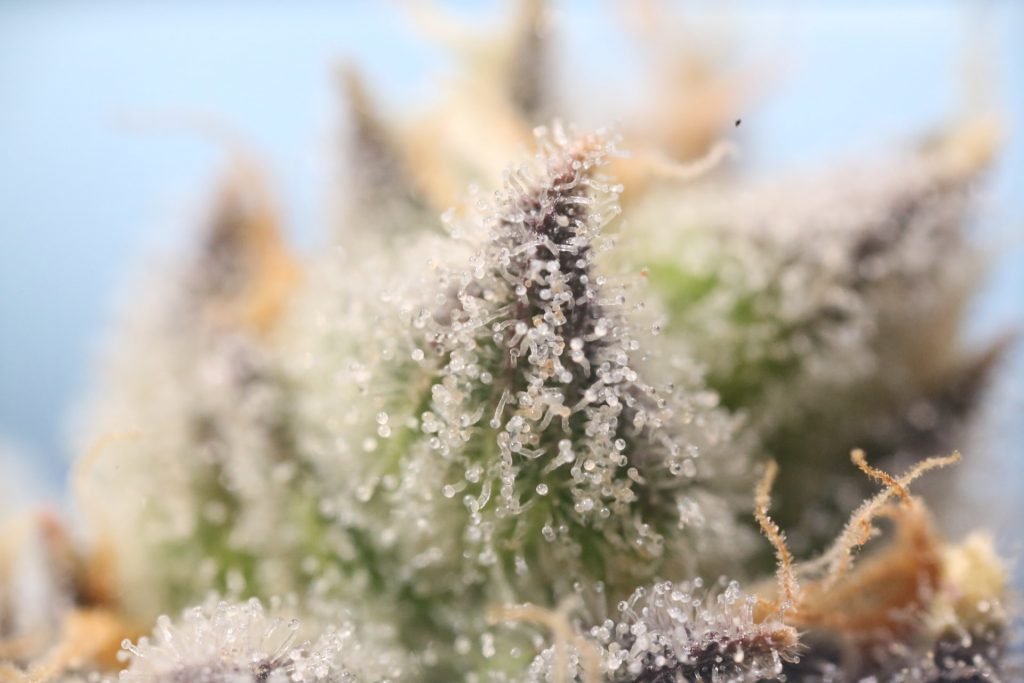Structure of the Cannabis Plant Leave a comment
You may have heard many terms floating around such as trichomes, nodes, cola, but what do they all mean and what part of the cannabis plant are they referring to? If you are planning to grow your own cannabis at home, then you should take some time to learn about the different parts of the cannabis plant.
In this post we will discuss the structure of the cannabis plant, as well as the difference between male and female plants, and the benefits to both.
Parts of the cannabis plant
The cannabis plant, along with many other plants, has similar features, such as the stem and leaves, but there may also be some terms you might not have heard of. Here we will explain the overall structure of the cannabis plant and what each thing is used for.
Taproot
The taproot is the main root and is the first root to sprout after a seed has germinated. All other roots will sprout from the taproot and bury down into the soil. They are how the cannabis plant gets the water, oxygen, and nutrients it needs to survive. To help your plant get the most out of the soil, you can add mycorrhizae to it, which is a fungus that helps to develop root systems.
Stem & branches
The stem will grow straight up from the root system and is what gives your cannabis plant its main structure and stability. The stem will help to support further branches coming off from it. When growing cannabis, some growers will cut short the top of the stem, also known as ‘topping’, so that the plant will grow out more, creating extra space for more flowers to form.
Branches will form off the main stem and will begin to grow flowers. You can also use the ‘topping’ method on the branches to create more bud sites.
Cotyledon leaves

The cotyledon leaves are the very first leaves that appear after germination. You will usually spot these as a pair, and it can show that the cannabis seed has successfully germinated. These are the leaves which you are looking for if germinating from a seed!
Fan leaves

Fan leaves are the large leaves that you often think of when you think of a typical cannabis leaf. They are used to capture as much light as possible for the cannabis plant to grow and are trimmed off at the time of harvest.
Sugar leaves
Sugar leaves are what form around the buds of the cannabis plant and are usually covered in a sticky resin. Growers will usually cut off and save these sugar leaves during harvest time, and they can then be used for extracts, or pre-rolls.
Node
A node is the place where a branch comes out from the main stem, or where two branches meet. Occasionally you will see both buds and fan leaves growing from the nodes. Internodal spacing is a term used to describe the amount of space between nodes and can give you an idea as to how tall the plant will grow.
Nodes can also be used early on to detect whether the cannabis plant will be male or female, by looking at the pre-flowers which will grow on them. These are the plants male or female sex organs.
Cola

A cola is when multiple buds grow closely together in a group. The main cola will form on the top of the cannabis plant and the smaller colas will form on some of the lower branches. Colas are also sometimes called ‘bud sites’.
Flowers/ buds
Flowers and buds are the same thing and refer to the flowers found on the female cannabis plant and are what gives you the high when consuming cannabis. The flowers are dried during harvest, ready to be consumed.
Pistil

The pistil is the sex organ of the female cannabis plant. Finding a pistil on your cannabis plant can help identify it as being a female (the ones that make the flowers). The first few pistils usually appear around 3 to 4 weeks into the vegetative stage, although this can be delayed until 8 weeks for some strains. They will appear at the nodes of the cannabis plant.
Stigma
Stigmas are the hair like strands that appear from the pistil ad are usually quite vivid in colour. They will collect pollen from the pollen sacs of the male plant, which will burst, for the female plant to collect. Stigmas are not responsible for the taste of the bud, but they do play an important role in the reproductive system. They will begin being a whitish colour and then gradually change colour to yellow, orange, purple or brown.
Trichomes/ crystals

Trichomes, often known as crystals, is a resin that runs through see-through type glands from the stems, leaves, and calyxes. The name crystals come from the fact that these glands almost sparkle due to their translucent appearance. Trichomes are essential to produce hash and contain the THC, CBD, and terpenes of the cannabis plant.
Bract
Bracts are leaves covered in resin, which cover over the female reproductive parts.
Calyx
The calyx covers the ovule which is situated at the bottom of the flower. It is so small it cannot be seen to the naked eye.
What is the difference between male and female plants?
Now that you know what the different parts of the cannabis plant are, you are probably thinking how you can tell if your plant is male or female. There are some distinct features which can tell us how the plant will turn out.
To determine the sex of your cannabis plant, you should first look at the nodes. Early detection can be seen early on when pre-flowers start to form. You may need a magnifying glass right at the very beginning as they may be small, but you will see either pollen sacs to indicate a male plant, or stigmas to show it is a female plant. You may see these changes a month or so into the vegetative stage.
Only the female plants produce the buds that you need to consume cannabis, so if you are wanting to grow your own plants, it is worth getting feminized seeds. This ensures that every seed will turn into a female plant, and you don’t have to worry about wasting time or money growing a male plant. All our seeds at CG Australia are feminized.
To prevent pollination, male and female plants are often grown separately, so there is no chance a female plant can catch the pollen from the male plant. Ensuring the plant remains a female plant will help the plant to put all its energy into producing buds rather than seeds. If a female plant gets pollen on it from a male, it may start to produce seeds, which may start growing inside the buds, which is not what you want!
Male plants are usually grown by expert growers or breeders, and are used to pollinated female plants, can produce hemp fibre, or to produce some amounts of THC (although much lower levels than female plants).
A hermaphroditic plant is much less common but is when the plant has both male and female sex organs. This could happen when the plant becomes stress, does not have enough nutrients, disease, or has some kind of damage to it. Hermaphroditic plants are not good to keep as they will produce buds with seeds in it and then pass on the same hermaphroditic genes.
To ensure you get the best results from growing your own cannabis, always buy feminised seeds, to ensure a guaranteed female plant!







